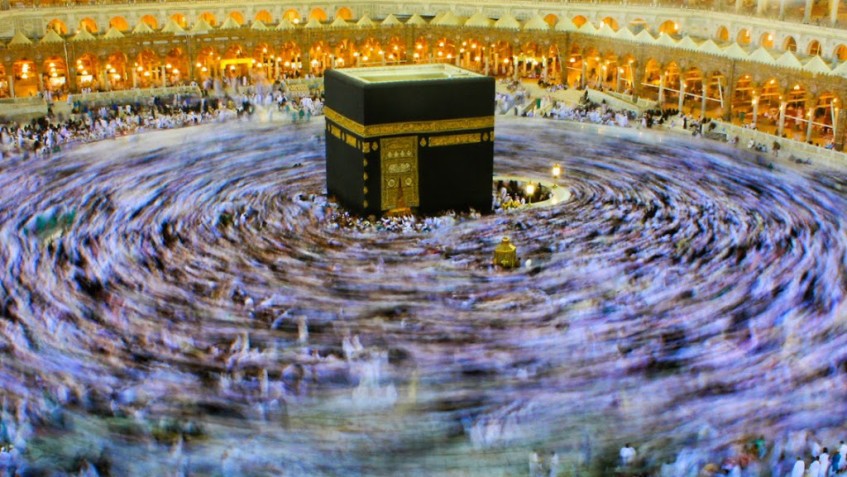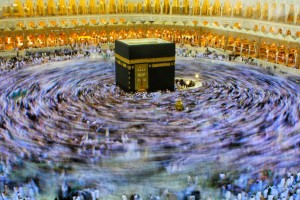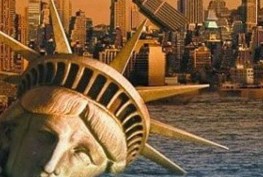When I was an undergrad at San Diego State my roommate and I went for a walk one evening. A strikingly beautiful woman approached us; she passed within a foot or two of us and only then did we realize she was actually a man – a female impersonator. My roomie stared at his passing and intoned, “Well, it’s quite an accomplishment…but nothing to be proud of.”
He could have meant the recently released film, Interstellar.
Lavishly photographed; well written, acted, directed and produced, and with special effects creating a spectacle and simultaneous microcosm of the universe beyond anything I have seen before, this epic is an incredible achievement. From a cinematic viewpoint it is awe inspiring. It also features more plot holes than a swiss cheese. Astronomically gargantuan plot holes gape from the screen. One depicts a man, protected only by a space suit, successfully transiting a black hole – a celestial phenomenon featuring gravity so intense it crushes stars and even light itself – hence the name. Another places the man inside a tesseract – a geometric form not found in nature – from which he shares equations that enable intergalactic colonization with his daughter across time so she can teach him when as a young man before leaving earth. Later the tesseract squirts him back to home and his daughter – now fifty years older than he; it just happens. A movie bursting with such magical thinking is impossible for this cowboy to see as anything but conceptual rubbish.
But some will say this is all covered by Einstein’s Theory of Relativity. Don’t mention it to Einstein unless you really want to offend him. Others will cite the new and “innovative” theories of Astrophysicist Kip Thorne as rationale for what the film dramatizes. This too is rubbish.
Albert Einstein defined insanity as doing the same thing again and again while expecting a different result. The producers of Interstellar – and especially Executive Producer – the very same – Kip Thorne should take note. His theories are about as new as propeller driven aircraft. They are a rehash of a sub theory of evolution that says if there are enough universes or dimensions or timelines – take your pick – the mathematical impossibilities in the notion of creation by random chance are eliminated. The theory stubs its toes against first causation, as do all its brother and sister theories. The Big Bang doesn’t help; it implies a Big Banger and we know Who that is. But if Thorne and his friends dress it up with enough stirring music and compelling visual presentation they appear to think they can sell what the physics community rejected many decades ago.
The plot of Interstellar begins with earth in apocalypse – but God is nowhere in it. An un-named blight destroys a different food crop each year and the dust storms make the Dust Bowl of the 1930s look like a Sunday picnic. The air is going bad and Mankind will perish within a generation unless we can re-locate to another planet – at least some of us. Farmer and former astronaut Cooper – who never reached space (Matthew McConaughey) – conveniently stumbles into a top-secret NASA facility just down the road. He re-connects Brand (Michael Caine), who recruits him to command an expedition for which he has not trained through a newly discovered worm hole – into which astronauts were sent ten years back to discover an earth-like planet in another galaxy. Brand tells Coop a million people can be saved – including his family – if he goes, although he might never return. Brand is lying; he doesn’t have the equations to construct the rescue; he can only send thousands of frozen embryos. He excuses his dishonesty by favoring species over persons. Coop discovers the deception and attempts to return to Earth, but is caught in the black hole and learns that the ghosts who communicated with his daughter when she was ten are really his own future self signaling from the tesseract.
What it boils down to – they keep repeating that it is all about evolution – including future anticipated evolution – as Coop eventually discovers we – the collective we – are God. The film is simply another attempt to evade accountability of any kind to a real God – that is the rub for atheists who, like alcohol addicts, need people to approve and perhaps share their dysfunction. It’s the warmed over Buddhist, Hindu, and Taoist philosophy – dressed in cinematic splendor – I outgrew as an undergrad. It is ultimately mega manipulative. I don’t like manipulation; I do prefer the really real. His name is Yahweh, His Son is Jesus, and His Spirit is the manifestation of His love on earth.
James A. Wilson is the author of Living As Ambassadors of Relationships and The Holy Spirit and the End Times – available at local bookstores or by e-mailing him at
praynorthstate@charter.net





